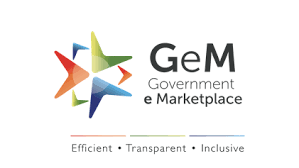Relevance of Section 16(4) thinning after the introduction of Reversal & reclaim ledger and Rule 37A?
The changes in Table 4 of the Form GSTR 3B as per notification vide 14/2022 dated 05th July 2022 has taken a new turn when the reversal reclaim ledger was introduced inserting Rule 88D of the CGST Rules, 2017. Kindly click here for the details on the ITC reversal ledger.
The question now arises is that, when there is an ITC reversal ledger, does Section 16(4) of the CGST Act, 2017 hold its validity? In order to fetch the validity let’s dive into the provisions of Section 16(4) of the CGST Act, 2017. Section 16(4) of the Act, 2017 reads as:
“A registered person shall not be entitled to take input tax credit in respect of any invoice or debit note for supply of goods or services or both after the thirtieth day of November following the end of financial year to which such invoice or debit note pertains or furnishing of the relevant annual return, whichever is earlier”.
If the same is read with Rule 37A of the CGST Rules 2017:
“Where input tax credit has been availed by a registered person in the return in FORM GSTR-3B for a tax period in respect of such invoice or debit note, the details of which have been furnished by the supplier in the statement of outward supplies in FORM GSTR-1 or using the invoice furnishing facility, but the return in FORM GSTR-3B for the tax period corresponding to the said statement of outward supplies has not been furnished by such supplier till the 30th day of September following the end of financial year in which the input tax credit in respect of such invoice or debit note has been availed, the said amount of input tax credit shall be reversed by the said registered person, while furnishing a return in FORM GSTR-3B on or before the 30th day of November following the end of such financial year:
Provided that where the said amount of input tax credit is not reversed by the registered person in a return in FORM GSTR-3B on or before the 30th day of November following the end of such financial year during which such input tax credit has been availed, such amount shall be payable by the said person along with interest thereon under section 50.
Provided further that where the said supplier subsequently furnishes the return in FORM GSTR-3B for the said tax period, the said registered person may re-avail the amount of such credit in the return in FORM GSTR-3B for a tax period thereafter”.
When we read the provision of Section 16(4) along with Rule 37A it clarifies that the credit which is availed is reversed within the due date – 30th November of the consecutive year the credit shall be reclaimed when the supplier files the return. For example, the credit reflected in GSTR 2B is availed & reversed within 30th November XXX3 by the recipient. Lets say when the supplier files corresponding GSTR 3B in September XXX4 & the recipient shall be eligible for the reclaim only in GSTR 3B of October XXX4.
In the above scenario, the objective of Section 16(4) is defeated & narrows down the scope of the same while Rule 88D has taken over its objective. Though the scope has widened for Rule 88D we should also be mindful of the fact that the credits reported in the ITC Reclaim ledger should have its eligible credit base. The burden as per Section 155 of the CGST Act, 2017 still remains with the taxpayer to show the eligibility of the credits as per Section 16(2) & Section 16(4) of the CGST Act, 2017. Once the opening balance has a sound base of the credit reversal with the onus that it is eligible, the scope of notice in Form DRC 01C is restricted.
It provides an area for rigorous litigation as the business should be mindful of the requirement that Section 16(4) is to be read with Rule 37, Rule 37A, Rule 42 & Rule 43. If in case any reclaim is made without considering the common credits, attracts liability & interest to the extent claimed.
The challenge in following Rule 37A is that, when the credit is reversed & the supplier absconds from filing it becomes a cost for business. The provision requires clarity on the fact that, when the department initiates recovery as per Section 79 of the CGST Act, 2017 will the taxpayer be eligible to reclaim the credits? Isn’t that sufficient for the taxpayer to show the genuineness of the transaction to claim the credits??? Rule 37A imposes a higher burden on the part of the taxpayer to track the suppliers while it is to be done by the proper officer who has more knowledge on their filing status.
Hence it cannot be concluded that the validity of Section 16(4) is completely eroded while it requires clarity by way of interpretation of law of the Hon’ble Courts. The gates of litigation are open in order to provide clarity on the same.




Comments
Post a Comment